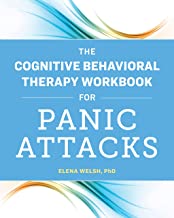Panic Disorder
What is panic disorder? Panic disorder occurs when you experience recurring unexpected panic attacks. The DSM-5 defines panic attacks as abrupt surges of intense fear or discomfort that peak within minutes. People with the disorder live in fear of having a panic attack.
Cluster Number:
Wiki Number: PW150
Diagnosis: Panic Disorder
US Patients: 2.5% sometime in life
World Patients:
Sex Ratio: M;W2
Age Onset: adolescence or early adulthood
Brain Area: amygdala, anterior cingulate cortex, hippocampus and periaqueductal grey may all be autonomically stimulated and frightening extent
Symptoms: 1-5 or up to 20 minute duration; rapid heartbeat, dizziness, fear of losing control, going crazy or dying; choking, paralysis and others.
Progression: Treatment helps 50%, but 30% have recurrences.
Causes: PTSD, taking on too much responsibility, genetic, substance abuse-drug or alcohol;
Medications: Antidepressants, benzodiazopines, beta blockers
Therapies: learning positive self-talk helps to reduce the panic; reductions can occur within twelve weeks.
Youtube Video: Panic Attacks vs. Panic Disorder
Amazon or Library Book:
The Cognitive Behavioral Therapy Workbook for Panic Attacks
Click the book to link or order from Amazon.

